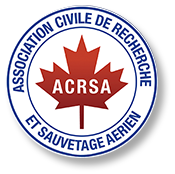From Issue 2/78
Wake Turbulence
A 737 was climbing from flight level 310 to 350 with a 747 cruising 12 miles ahead at FL350, when the 737 encountered wingtip vortices. The 737 pilot said "moderate chop" for 45 seconds caused disturbance to articles in the passenger cabin, "annoying" the occupants.
Sometimes, wake turbulence is more than annoying — it can be dangerous. We know of a Canadian 727 which suddenly rolled 90° while climbing through the wake of a L1011 1215 miles ahead. Although the terms "wake turbulence" and all of the disturbed air behind the aircraft including the downwash from the wings which initially can be 1,500 feet per minute. In this "wake" the two wingtip vortices join within 5-20 wingspans behind the aircraft. Wingtip vortices are by far the rnost dangerous, possessing tangential speeds of 224 feet per second. Vortices can persist up to two minutes which means that they are active at 16 miles when the following aircraft is cruising at mach .8.
Originally Published: ASL 1/1998
Original Article: From Issue 2/78 - Wake Turbulence









